Top 5 pave bikes - Video
Now the cobbled classics have finished, we take a closer look at five of the best bikes ridden by the pros
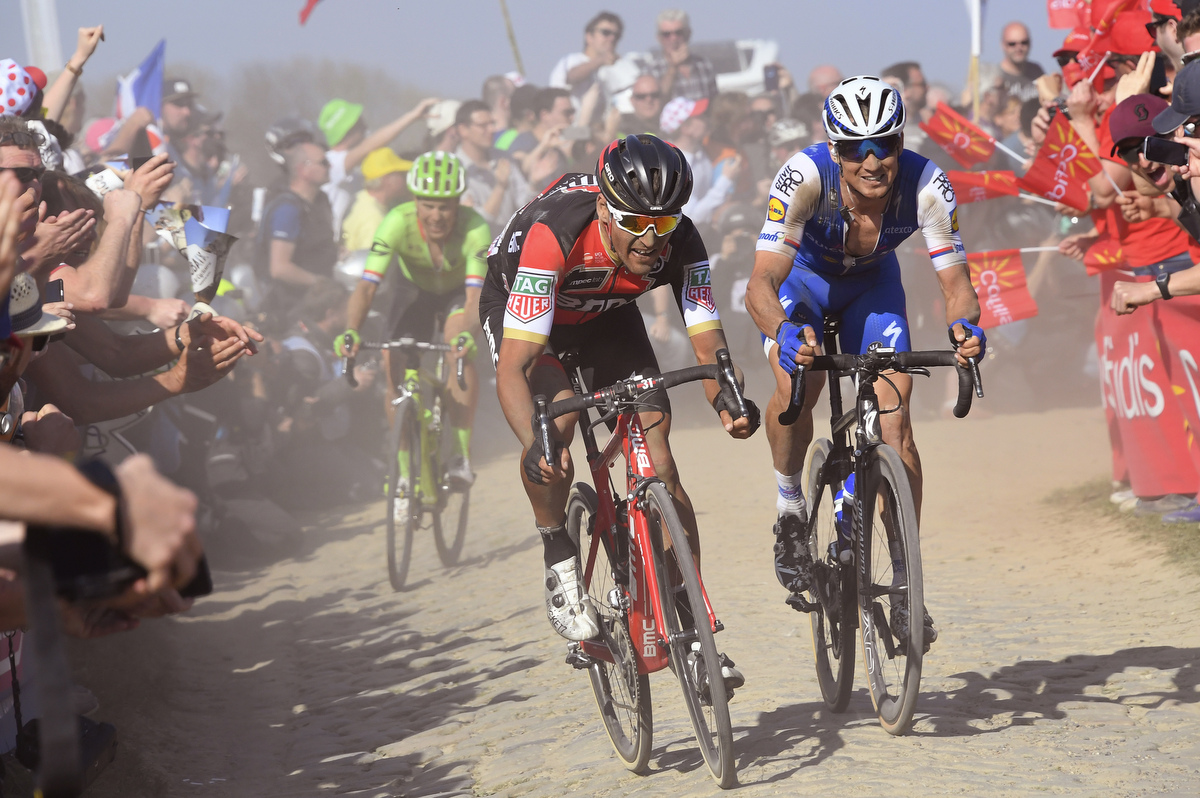
This article originally appeared on BikeRadar
Kassein. Pavé. Cobbles. Whatever you call them, the old stone roads of Paris-Roubaix cause the toughest of racers to rethink their bike set ups. Some exchange the regular race frames for modified endurance models. Others reconfigure their braking and shifting placements. And every single rider taking the start goes for bigger tires than they will use practically all year.
Here we take a look at our favourite pro bikes of the pavé for 2017, featuring pro-only framesets, wheels and suspension.
Ian Stannard's Pinarello Dogma K8-S with HiRide-controlled hydraulic rear suspension
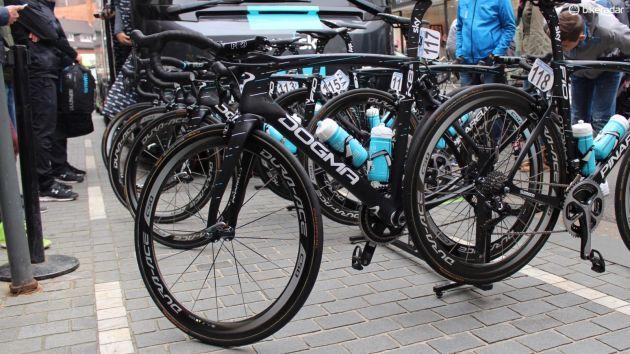
Ian Stannard’s Pinarello Dogma K8-S
We spotted a strange remote strapped to Ian Stannard's handlebars at Scheldeprijs, the mid-week Belgian race that falls between the Tour of Flanders and Paris-Roubaix. Turns out Stannard was race testing a new electronically modulated hydraulic rear suspension system on his Pinarello Dogma K8-S.
In partnership with the Italian start-up Hi-Ride, Pinarello equipped Stannard with a bike that can change between oil-damped travel and fully locked out in fractions of a second, based either on input from 6-axis accelerometers and gyroscopes positioned inside the bike frame or from rider control with a remote on the bars.
Stannard raced this bike at Paris-Roubaix, where he was one of very few riders on 27mm tires, while the rest of the field opted for 28 and 30mm tubulars.
Get The Leadout Newsletter
The latest race content, interviews, features, reviews and expert buying guides, direct to your inbox!
Stannard's teammate Gianni Moscon also started on a hydraulic K8-S — the only other such prototype in Team Sky's fleet — but finished on a standard elastomer K8-S.
Zydnek Stybar's Specialized Roubaix
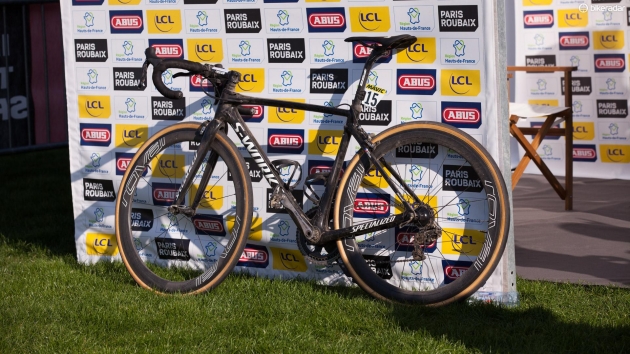
Zydnek Stybar's Specialized Roubaix
The 'cross star turned roadie Zydnek Stybar raced a bike that at first glance looked very much like a cyclocross bike set up we used to see back in the day with bar-top brake levers.
But a closer look shows that the Stybie's Roubaix set up is anything but old-school, with Shimano Di2 sprint shifters positioned right up against the stem for shifting from the bar tops, plus Specialized's new Future Shock spring suspension system set atop the head tube.
While all the Quick Step riders rode some version of the new Roubaix, none rode a stock consumer bike. Stybar's teammate and former Roubaix winner Nikki Terpstra opted for a rigid version of the Future Shock — so it looked like a suspension piece but didn't actually move — but that prototype piece broke underneath him on race day.
Stybar used a stiffer spring than consumers get and like his teammates rode a rim-brake version of the Roubaix with longer and lower geometry than the stock bike.
John Degenkolb's Trek Domane SLR Club Racer
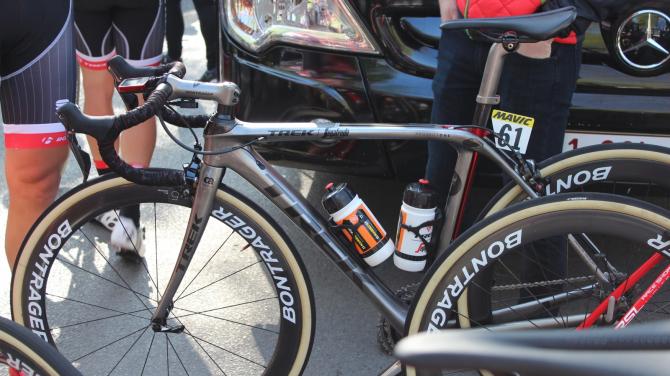
John Degenkolb’s Trek Domane SLR Club Racer
Trek launched its Domane SLR last year with adjustable rear suspension. On this bike the seat tube and seat mast can flex as one, pivoting at the junction with the top tube and seatstays that Trek calls the IsoSpeed decoupler. The adjustment comes with a little sliding lever on the down tube.
The front end has something similar going on, with some flex built into the head tube.
There are two cools things about John Degenkolb's bike. One, it's a new paint job that Trek did to emulate the German's motorbike. And two, and perhaps of more interest, is that this bike also marks the introduction of a consumer Trek Domane SLR Disc in long and low race geometry.
Boasson Hagan's Cervelo Prototype R Series
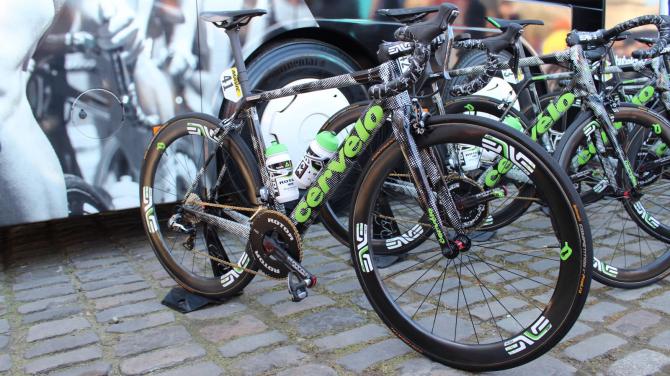
Edvald Boasson Hagan’s Cervelo Prototype R Series
A few things standout about Edvald Boasson Hagen's Cervelo R series prototype. This not-yet-released R Series frameset has a cool paint job, for one, and it's notable that Dimension Data was racing the pavé on the same bikes they use for climbing races.
The bike looks similar to the current R5 lightweight bike, but with a beefier head tube fore/aft profile and a new, integrated seat clamp.
Also notable are the ENVE SES 4.5 AR wheels. The Utah carbon fabricator made the 4.5 AR Disc wheels as ultra-wide aero rims just for wide tires. How wide? The rims have a whopping 31mm external width, so air can flow straight back from 30mm tires.
These wheels are a pro-edition rim-brake model, however, glued up with 28mm Continental tubulars.
Boassan-Hagen ran a 54-tooth big ring on his power-meter equipped Rotor cranks.
Greg Van Avermaet's BMC Granfondo RBX
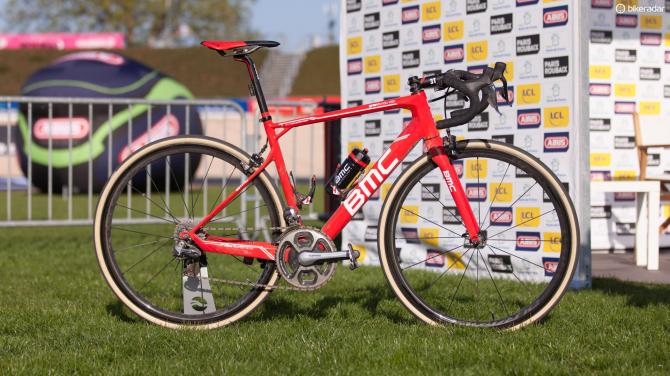
Greg Van Avermaet's BMC Granfondo RBX
To the winner, go the spoils. In this race, Greg Van Avermaet got himself a big rock. Minutes after he piloted his BMC Granfondo RBX across the finish line at the Roubaix velodrome, his name was etched onto the winner's trophy.
Van Avermaet's bike was basically identical to what he's raced the last two years — a Granfondo endurance bike with extra tire clearance. Here, he raced on unmarked 30mm Vittoria Corsa tubulars, glued to Shimano Dura-Ace carbon wheels.
The cockpit again this year was a mix of old school and new school, with a Shimano Di2 climber switch mounted next to a single bar-top brake lever. BMC mechanics used 105-level brake calipers for their long reach and compatibility with that bar-top brake lever.
Van Avermaet started the race on his #1 bike with SRM power meter and gold PC8 computer. Gold for the Olympic road race champion, you understand. But he finished on his #2 bike sans computer after a mid-race tumble.
So, sorry Strava fans, there is no complete file to be seen for the ride of the 2017 Paris-Roubaix winner. Yet somehow, despite it not being on Strava, it still very much happened.